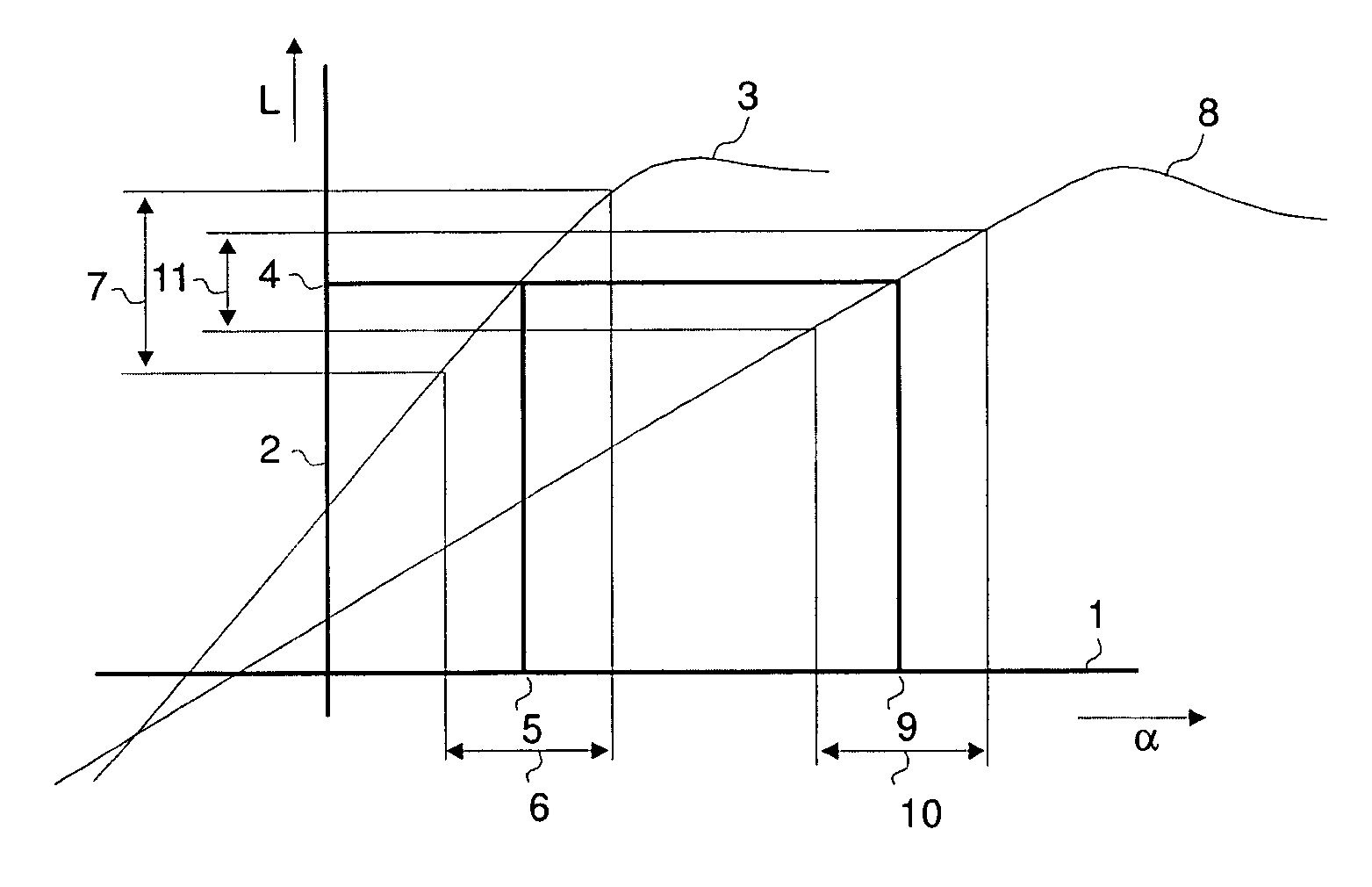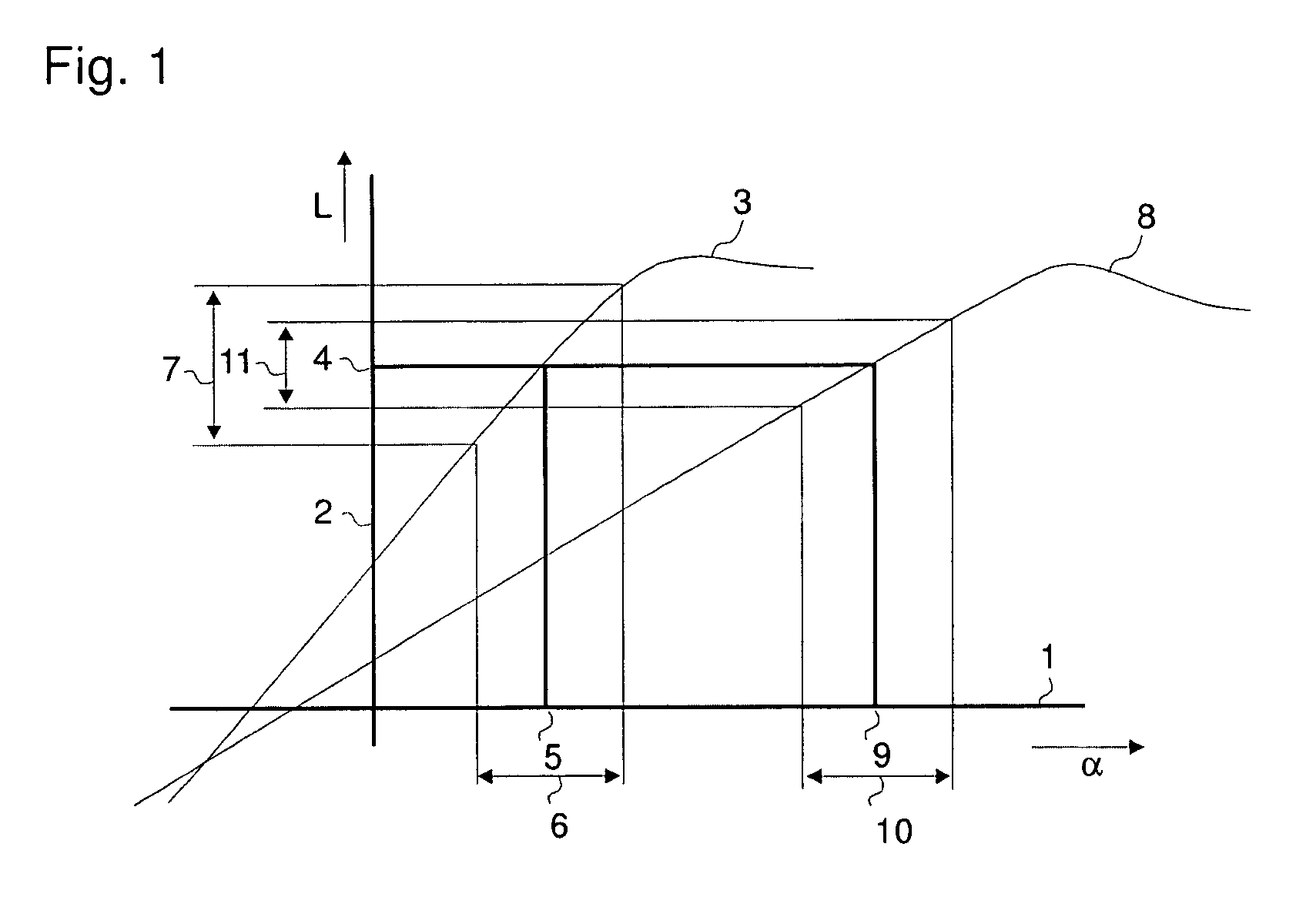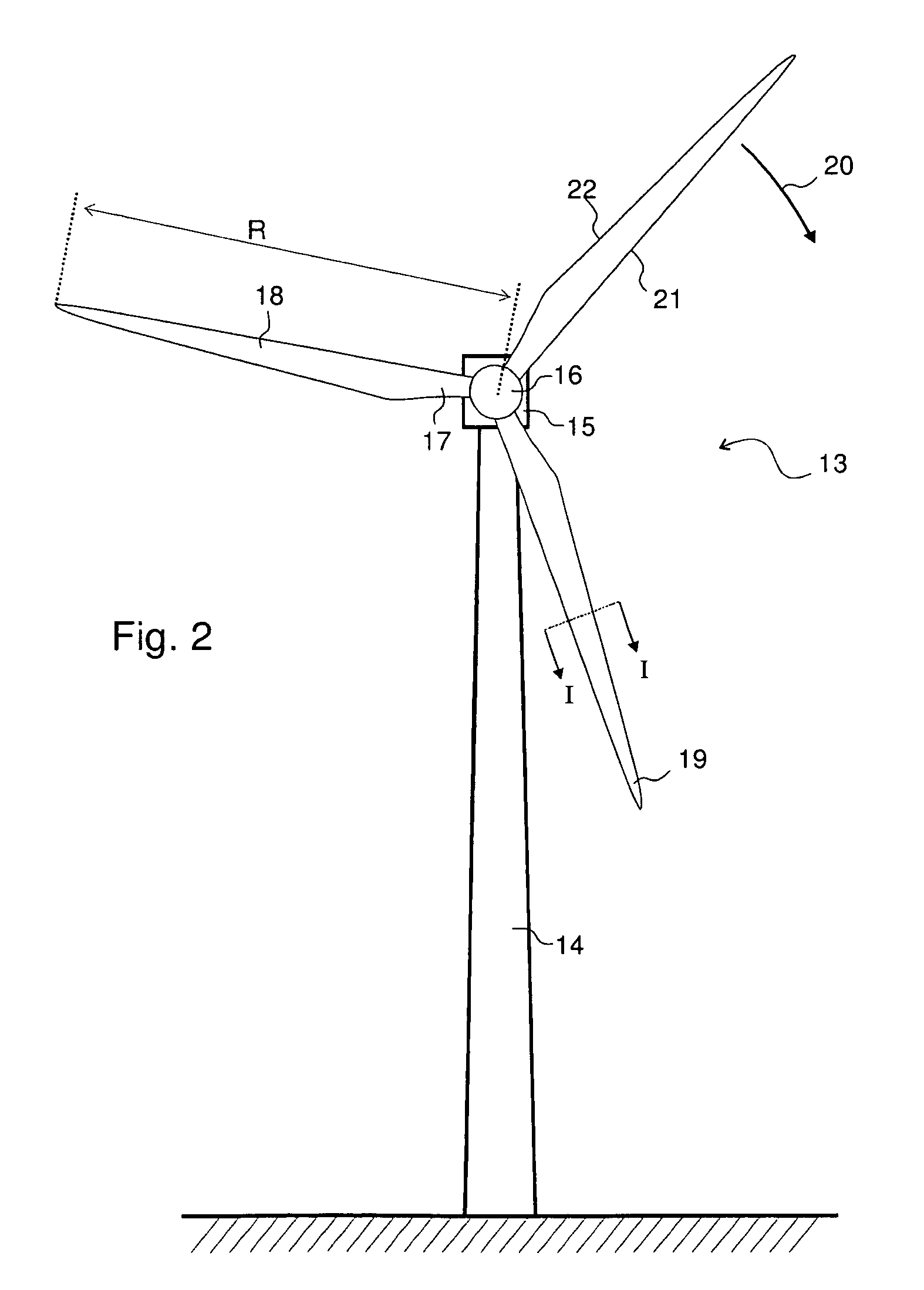Wind turbine with slender blade
a technology of wind turbines and blades, which is applied in the direction of propulsive elements, marine propulsion, vessel construction, etc., can solve the problems of high wind turbine costs, additional costs, and hits the tower, and achieve the effects of reducing spacing, increasing angle, and changing the blades according to inventions
- Summary
- Abstract
- Description
- Claims
- Application Information
AI Technical Summary
Benefits of technology
Problems solved by technology
Method used
Image
Examples
Embodiment Construction
[0059]FIG. 1 shows a plot of the lift L versus the angle of attack α. Curve 3 shows the relation for a classical airfoil without lift enhancing means. To reach a given lift 4 the flow should enter the airfoil under an angle of attack 5. Due to e.g. turbulence in the wind the angle of attack varies in range 6 and therefore the lift will vary in range 7. An airfoil according to the invention with a higher lift coefficient and a shorter chord behaving like curve 8 should reach the same lift 4. This is realised at a larger angle of attack 9. Assuming the same turbulence in the wind, the angle of attack varies in range 10 which is as wide as range 6. Now the surprising element: The lift variation 11 of the airfoil with the higher lift coefficient is less than the lift variation 7 of the classical airfoil.
[0060]FIG. 2 shows as example of the invention an upwind turbine 13 with tower 14 and nacelle 15. The turbine rotor of radius R comprises a hub 16 and blades 18 with tip 19 and root 17. ...
PUM
 Login to View More
Login to View More Abstract
Description
Claims
Application Information
 Login to View More
Login to View More - R&D
- Intellectual Property
- Life Sciences
- Materials
- Tech Scout
- Unparalleled Data Quality
- Higher Quality Content
- 60% Fewer Hallucinations
Browse by: Latest US Patents, China's latest patents, Technical Efficacy Thesaurus, Application Domain, Technology Topic, Popular Technical Reports.
© 2025 PatSnap. All rights reserved.Legal|Privacy policy|Modern Slavery Act Transparency Statement|Sitemap|About US| Contact US: help@patsnap.com



